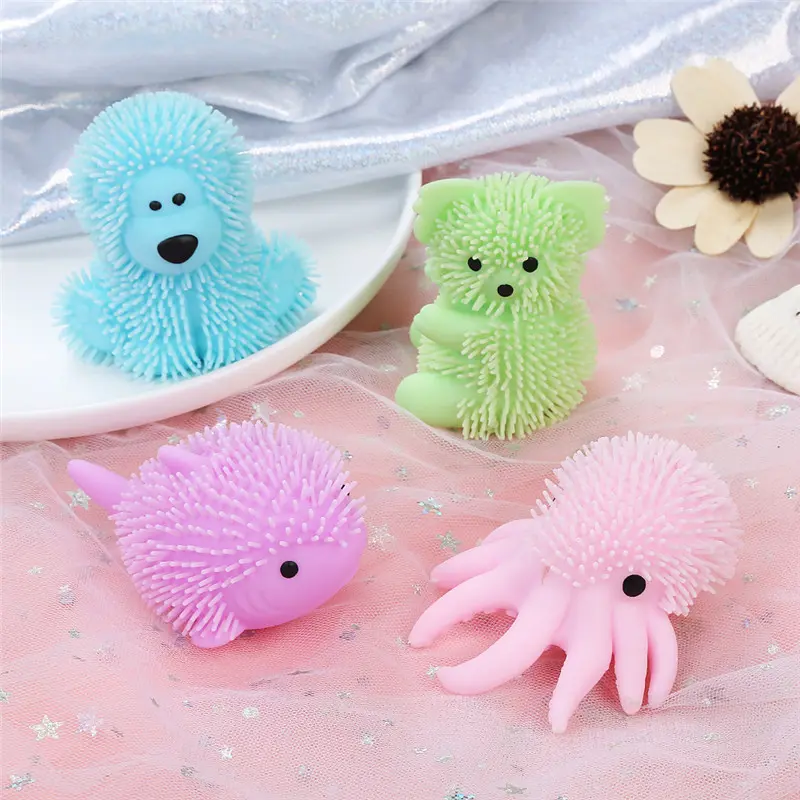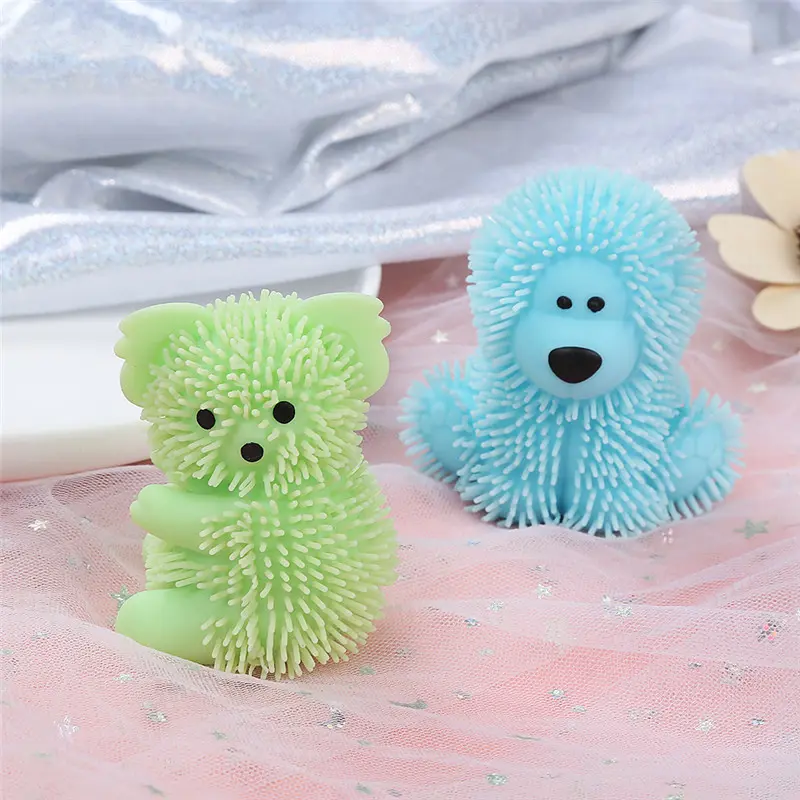Puffer Ball’s Coloring Process: A Comprehensive Analysis from Materials to Process
Introduction
As a popular toy, Puffer Ball is widely in demand in the international market. Its bright colors and unique shapes make it a favorite of children and adults. However, in order to ensure that the coloring effect of Puffer Ball is long-lasting and beautiful, it is necessary to have a deep understanding of the key factors and optimization methods of its coloring process. This article will comprehensively analyze the coloring process of Puffer Ball from multiple aspects such as material selection, coloring process, quality control, etc., and provide corresponding solutions.
1. Basic characteristics and applications of Puffer Ball
1.1 Definition and use of Puffer Ball
Puffer Ball is a toy made of elastic material, which is usually used for stress relief, entertainment and educational purposes. Its unique elasticity and softness make it an ideal choice for children’s toys, stress balls and decorations. The diversity and functionality of Puffer Ball make it widely attractive in the international market.
1.2 Material characteristics of Puffer Ball
The main materials of Puffer Ball include TPR (thermoplastic rubber), PVC (polyvinyl chloride) and silicone. These materials have good elasticity and durability and can withstand repeated squeezing and stretching. In addition, these materials also have good coloring properties and can achieve rich color effects through a variety of coloring processes.
2. Key factors affecting the coloring effect of Puffer Ball
2.1 Material selection and processing
The selection of materials directly affects the coloring effect of Puffer Ball. High-quality TPR and PVC materials can provide better coloring performance and durability. Before coloring, the surface of the material needs to be cleaned and pretreated to ensure that the pigment can be evenly attached. Pretreatment methods include surface grinding, degreasing and preheating.
2.2 Selection of coloring process
Different coloring processes are suitable for different materials and application scenarios. Common coloring processes include spraying, dipping, screen printing and thermal transfer. Each process has its advantages and disadvantages and needs to be selected according to specific needs. For example, the spraying process is suitable for uniform coloring of large areas, while screen printing is suitable for the production of fine patterns.
2.3 Selection and blending of pigments
The selection of pigments is crucial to the color effect and durability of Puffer Ball. High-quality pigments have good hiding power, light resistance and weather resistance. When mixing pigments, precise proportions need to be adjusted according to design requirements to ensure color accuracy and consistency.
2.4 Control of coloring environment
The coloring environment has a significant impact on the coloring effect of Puffer Ball. Temperature, humidity and ventilation conditions need to be strictly controlled to ensure uniform distribution and rapid drying of the pigment. Generally, the temperature of the coloring workshop should be maintained at 20-25℃, and the relative humidity should be controlled at 50%-60%.
2.5 Drying and color fixing treatment
Drying and color fixing treatment are key steps to ensure that the pigment is firmly attached to the surface of Puffer Ball. Common drying methods include natural drying, hot air drying and infrared drying. Color fixing treatment can be achieved by chemical methods (such as using color fixing agents) or physical methods (such as high temperature treatment).
3. Solutions to optimize the coloring effect of Puffer Ball
3.1 Choose the right material
Choose the right material according to the application requirements of Puffer Ball. For example, for products that require high elasticity and durability, TPR material is an ideal choice; for products that require a soft touch, silicone material is more suitable.
3.2 Optimize the coloring process
Choose the most suitable coloring process according to the design requirements and production scale of the product. For example, for mass production, the spraying process can provide efficient and uniform coloring effects; for small batches or customized products, screen printing or thermal transfer is more suitable.
3.3 Improve the quality of pigments and the accuracy of mixing
Use high-quality pigments and ensure the accuracy and consistency of colors through precise mixing ratios. Advanced pigment mixing equipment and color management systems can be used to improve the accuracy of pigment mixing.
3.4 Control the coloring environment
During the coloring process, strictly control the temperature, humidity and ventilation conditions of the workshop. Environmental control systems such as air conditioning and dehumidification equipment can be installed to ensure the stability of the coloring environment.
3.5 Strengthen drying and color fixing treatment
Use efficient drying equipment and color fixing technology to ensure that the pigment is firmly attached to the surface of Puffer Ball. For example, the use of infrared drying equipment can accelerate the drying process of the pigment, and the use of color fixing agents can improve the durability of the pigment.
IV. Case Analysis and Solutions
4.1 Case 1: Uneven Coloring Problem in a Toy Factory
When a toy factory was producing Puffer Ball, it was found that the coloring effect was uneven. After analysis, it was found that the problem mainly lay in the pigment mixing and the control of the coloring environment. By optimizing the pigment mixing ratio and installing an environmental control system, the problem was effectively solved.
4.2 Case 2: Pigment Shedding Problem
Another toy factory found that the pigment of its Puffer Ball fell off after a period of use. By improving the drying and color fixing process, the problem was significantly improved.
V. Future Development Trends and Technological Innovation
5.1 Intelligence and Automation
With the advancement of technology, Puffer Ball’s coloring equipment is moving towards intelligence and automation. By introducing advanced sensors and control systems, real-time monitoring and automatic adjustment of the coloring process can be achieved, thereby improving the stability and consistency of the coloring effect.
5.2 Environmental Protection and Energy Saving
Environmental protection and energy saving are important development directions for the toy industry in the future. By optimizing the pigment formula and coloring process, energy consumption and environmental pollution can be reduced, and sustainable development can be achieved.
VI. Conclusion
To ensure that the coloring effect of Puffer Ball is long-lasting and beautiful, it is necessary to start from multiple aspects such as material selection, coloring process, pigment mixing, environmental control and drying and fixing. By deeply understanding the key factors affecting the coloring effect and taking corresponding optimization measures, the coloring quality and durability of Puffer Ball can be significantly improved. In the future, with the application of intelligent and environmentally friendly technologies, Puffer Ball will play a more important role in the toy industry.
Post time: Apr-02-2025

